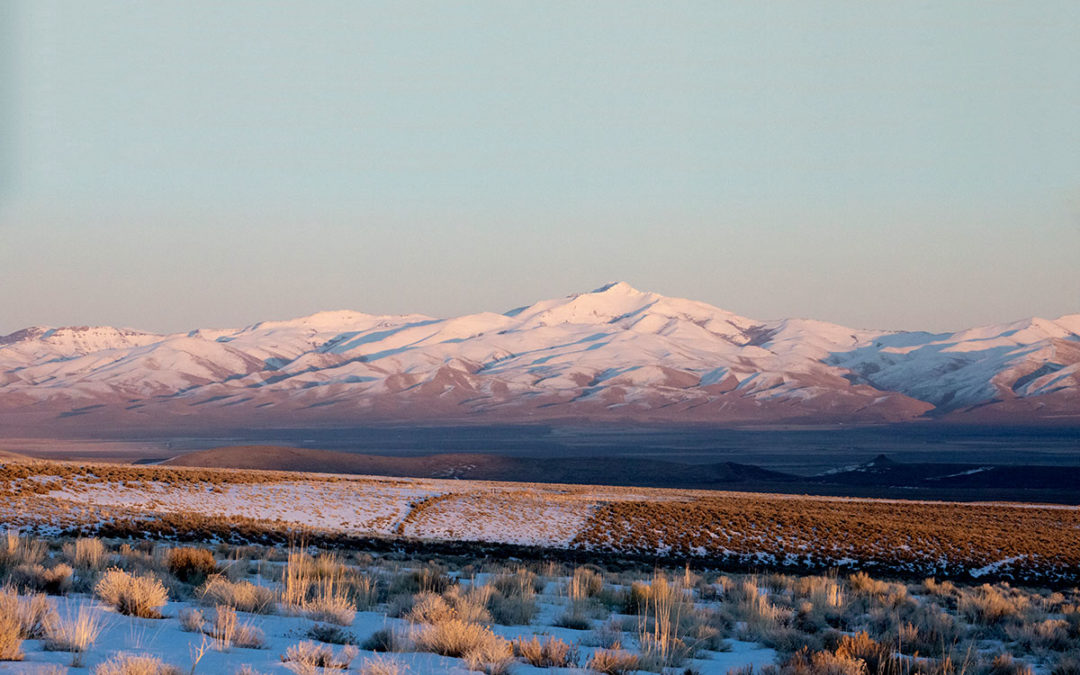by Austin Price, for Earth Island Journal
SIXTEEN MILLION YEARS AGO, a volcano erupted over the Yellowstone hotspot near the present-day border of Oregon and Nevada. The blast expelled 1,000 cubic kilometers of rhyolite lava as the land collapsed into a 30-mile-long, keyhole-shaped caldera. Magma, ash, and other sediments entered the keyhole, and for the next million years the clay-rich land rose and reformed like bread dough in a proofing drawer. Water mixed with the clay, bringing to Earth’s surface a swirl of chemical elements like uranium, mercury, and another metal that, when isolated and cut, shines silvery white — lithium.
Today, above ground, the McDermitt Caldera is a remote landscape of rocky outcrops, high-desert plateaus, and meadows of wild rye. As in much of the Great Basin, desert plants fill the “currents, tides, eddies, and embayments” of this “sagebrush ocean,” as writer Stephen Trimble once described it. Lithium rests beneath this dynamic sea.
On the southwest edge of the caldera, in Humboldt County, Nevada, nestled between the Double H Mountains to the south and the Montana range to the north, Thacker Pass rides the crest of a sagebrush wave. The pass is a corridor for herds of migrating pronghorn and mule deer. Overhead, golden eagles hunt for kangaroo rats. Below, greater sage grouse perform their mating dance. In the nearby springs and drainages, an endemic snail called the Kings River pyrg and the imperiled Lahontan cutthroat trout persist on precious water.
Read the rest at Earth Island Journal. Photo by Austin Price.
Sign the petition from People of Red Mountain: https://www.change.org/p/protect-thacker-pass-peehee-mu-huh
Donate: https://www.classy.org/give/423060/#!/donation/checkout
For more on the Protect Thacker Pass campaign
